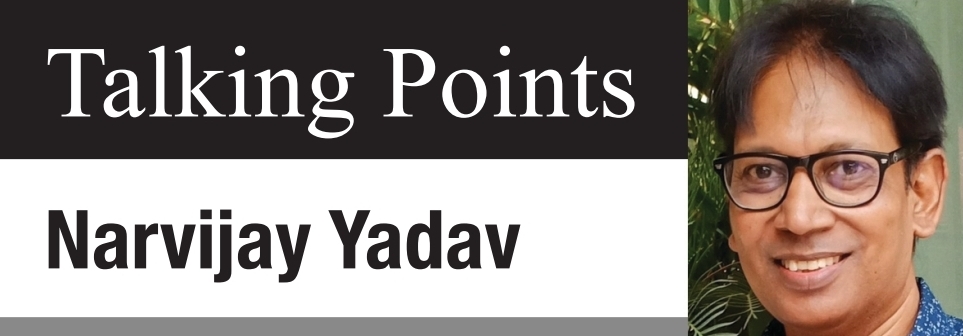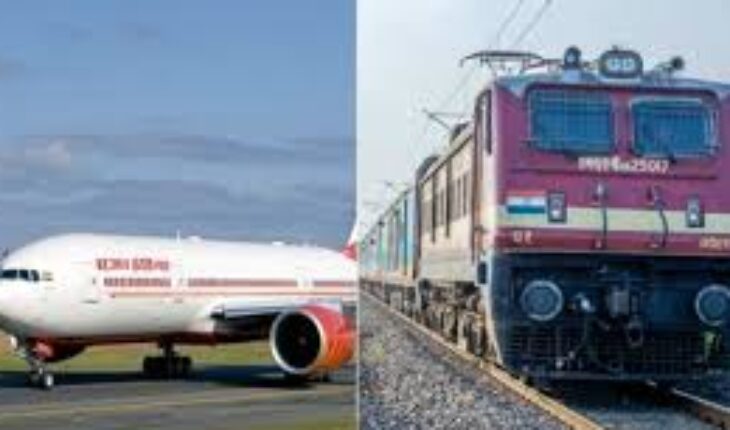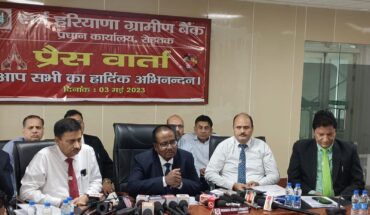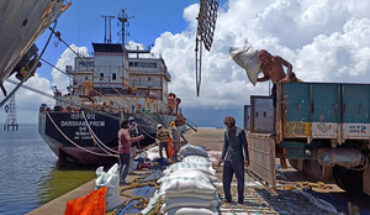In the face of the growing menace of disruptions and bomb hoaxes, rail and air transport is under threat. The return of underworld activities in Mumbai is also an emerging concern. Are our security preparations in place?

In recent weeks, India has witnessed disturbing disruptions to critical infrastructure, threatening the fabric of our daily lives. From railway tracks to airline operations and even Bollywood, the shadow of terrorism looms large. It began with bizarre obstacles placed on railway tracks – electric poles, gas cylinders, stones, motorcycle wheels, and iron pieces – to disrupt train movements. The consequences were devastating: several derailments and accidents, claiming precious lives and causing widespread destruction.
Unfortunately, the focus has now shifted to air traffic also, with a surge in hoax bomb calls and messages on social media. In just one week, airlines received nearly 100 bomb threats, causing immense losses to Air India, Vistara, IndiGo, and others. Airlines are bearing the brunt of bomb hoaxes, incurring significant expenses ranging from fuel dumping and aircraft grounding to accommodating passengers and crew in hotels. According to estimates, a single hoax incident can result in losses exceeding Rs 3 crore. The government is currently assessing the threat messages, with the civil aviation minister suggesting that it may be the work of a prankster or minor every time using a new anonymous X account (earlier known as Twitter).
The killing of a famous politician, NCP leader Baba Siddique in Mumbai and fresh threats to actor Salman Khan have sent shockwaves through Bollywood. The primary suspect, notorious gangster Lawrence Bishnoi, who is currently lodged in a Gujarat prison, highlights the challenges of containing organized crime. With the motive of the murder still unknown, security agencies are scrambling to respond to such incidents. The frequency and diversity of these disruptions raise concern about our intelligence failures. The question arises: are our agencies adequately equipped to tackle this evolving threat landscape?
Although the railway ministry has implemented some measures to ensure rail safety in the country, ordinary rail passengers are afraid. Some of the measures taken by the railways include replacing old tracks to prevent accidents; using ultrasonic flaw detection machines and electronic monitoring of track geometry; relying on electrical and electronic interlocking systems to eliminate human error; using train protection and warning systems on hundreds of route kilometers; eliminating unmanned level crossings; and increasing smart coaches, online monitoring, and GPS-based trackers. How effective these measures would be in containing railway track-related crimes is yet to be seen.
These disruptions have raised concerns about the identity and motives of those responsible. While investigations are ongoing, several possibilities emerge. Terrorist organizations, international or local outfits, may aim to create fear and disrupt critical infrastructure. Alternatively, anti-social elements seeking thrill or revenge may exploit vulnerabilities. Lone wolves, individuals with grievances or extremist ideologies, may also act alone.
However, identifying and apprehending the culprits has proven challenging. One major hurdle is the lack of intelligence, which hampers investigations. Furthermore, perpetrators use sophisticated methods, including encrypted communication, proxy servers, and anonymous accounts, complicating tracking efforts. Limited resources, including manpower, technology, and expertise, constrain law enforcement agencies. Additionally, coordination issues between agencies and information-sharing gaps hinder progress.
Unraveling intricate plots and identifying culprits requires time and expertise, making investigations complex. To overcome these challenges, enhancing intelligence gathering and sharing is crucial. Leveraging technology, such as AI-powered tools, data analytics, and cyber forensics, can also aid investigations. Strengthening inter-agency coordination, increasing public awareness, and encouraging vigilant reporting are essential. Providing specialized training for investigators will also help.
By addressing these aspects, India can improve its response to disruptions and ensure safer transportation services. Effective collaboration between law enforcement agencies, intelligence units, and transportation authorities is vital. The government must prioritize investing in cutting-edge technology and training to combat these evolving threats. As terrorism evolves, so must our response. Enhanced coordination, technology integration, and public awareness are crucial to containing these disruptions. The intelligence community must adapt to stay ahead of these threats. We cannot afford to let terrorism disrupt our daily lives. The time to act is now!
The writer is a senior journalist and columnist. Views are personal. Twitter @narvijayyadav






